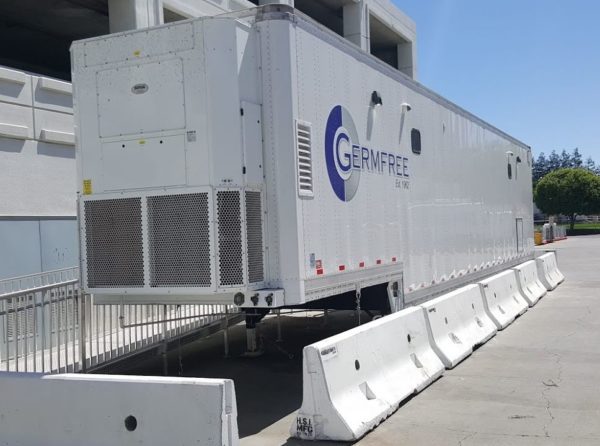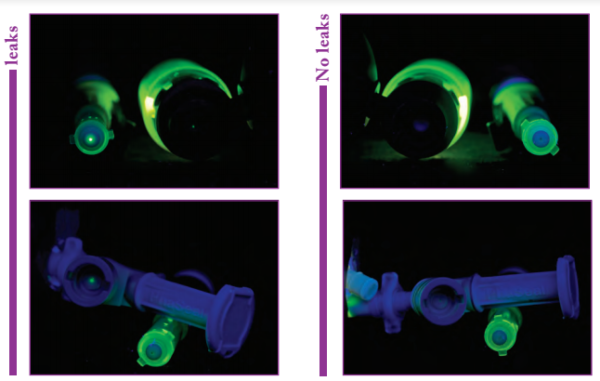For almost a year, I’ve been working as a ‘Pharmacy Project Manager’ on a large healthcare system project to bring all their pharmacy sterile compounding spaces — a.k.a. Cleanrooms, SCA’s,
The time on this project has been one of the highlights of my 20-plus year career. I’ve learned so much in such a short period. You think you know something until you have to start doing it day in and day out. It’s only then that you realize you know nothing. Here I am a year later and my knowledge base on sterile compounding has increased tenfold. It’s been a great experience.
One of the things that I learned early on in this position is that no pharmacy project in California is easy. There are several state and local agencies that have to be involved. And as one might expect, when government agencies get involved, the paperwork, time, money spent, and frustration can escalate quickly.
The process for remodeling or building a new sterile compounding area, at least in California, involves at least three agencies: the Office of Statewide Health Planning and Development (OSHPD), the California State Board of Pharmacy (BoP), and the California Department of Public Health (CDPH).
In a nutshell:
Office of Statewide Health Planning and Development (OSHPD): Part of the OSHPD mantra is to “ensure hospital buildings are safeâ€. They’re basically the organization that looks at your architectural and engineering plans and says yea or nay. My experience has mostly been nay on first glance followed by weeks of back and forth until all parties are satisfied. It’s an interesting process, to say the least. It’s also time-consuming.
OSHPD is a real stickler when it comes to anchoring equipment in place in case of an earthquake — noting that California has only had a few major quakes in the past few hundred years. A majority of our quakes are small and cause no damage. But don’t tell that to OSHPD. Their anchoring requirements are, shall we say robust; read that as overkill. The buildings around the anchored equipment will come crashing down long before the equipment will budge an inch. Just sayin’.
OSHPD is the first organization to sign off on a project. Once the plans are approved, a building permit may be issued and construction may begin. Once construction is complete, OSHPD inspects the area, and if everything meets code, they sign off and provide a Certificate of Occupancy (C of O) for
California State Board of Pharmacy (BoP): The BoP is responsible for ensuring that every pharmacy, or part of a pharmacy, conforms to the requirements set forth by the California Lawbook for Pharmacy. The BoP process starts with submission of an application, license sterile compounding or satellite pharmacy. The BoP reviews the document and either requests changes, which happens a lot, or approves the application and assigns an analyst. The analyst assigns an inspector to the project and a new set of back and forth begins. The inspector often asks for a lot of paperwork before their inspection: copy of sterile compounding PnP, testing and certification results for the room and hood, culture results, “QA†and competency results for staff, cleaning logs, etc. Once the inspector is satisfied with the paperwork — noting that each inspector is different and may ask for different things — they schedule a visit.
Assuming the BoP inspection goes smoothly, which is a hit and miss, the inspector will clear the site for licensing. Unfortunately, the inspector doesn’t actually license the space. All they do is notify the analyst assigned to your case that the space has been cleared for licensing. The actual license isn’t official until a new license number is assigned and posted to the BoP website. This can take anywhere from 2-6 weeks after the inspection. The BoP says “2 weeks†but I’ve found that to be inaccurate in almost all cases so far. The fastest I’ve had approval has been two weeks. The longest has been more than six weeks. If you haven’t heard from the BoP in two weeks, I recommend sending them a nudge, “hey, remember us?â€.  It seems to help.
I recommend submitting your application to the BoP at least a couple of months before construction is complete.
California Department of Public Health (CDPH):Â If one were to assume that CDPH is a single organization, one would be only partly correct. For pharmacy projects, the organization is actually broken into multiple groups, each with its own set of requirements and approval processes for every single pharmacy sterile compounding project in California.
There’s the CDPH Central Application Unit (CAU), which works with each facility to ensure all necessary paperwork is in order: an HS Form 200 application form, along with a bunch of other paperwork like the OSHPD C of O and Form STD 850 Fire Safety Certificate. It’s quite a process. However, I’ve found that the CDPH CAU is easy to work with. They’re a friendly bunch that appears to want to help.
And there’s the CDPH Pharmaceutical Consultant Unit (PCU). As far as I can tell, the existence of the PCU in an official capacity is new. At least it feels new. The PCU requires its own laundry list of paperwork. Seriously, it’s a huge list of stuff.  The list includes the C of O for the space, even though the CAU requires it before they notify the PCU inspector; all sterile compounding PnP; temperature, pressure, and cleaning logs; a copy of the pharmacy plans, including HVAC system layout — even though this has already been approved by the engineers at OSHPD; test results for the room and hoods; employee competencies and QA testing; high-resolution photos of the space — even though CDPH PCU has no way to receive files this size and can’t use a file sharing service like Dropbox, Google Drive, or OneDrive from Microsoft.
Given my experience with the CDPH PCU, it’s difficult for me to understand their existence. They do almost exactly the same thing as the BoP. See above. It’s a duplication of efforts, to say the least. And in my humble opinion, the PCU doesn’t appear to provide any benefit to the overall health of the project. It doesn’t really matter as going through the PCU for approval of the space is required, so that’s what we do. Fortunately, the PCU inspectors are typically pretty easy to work with. They demand a lot but typically work with you to get it done.
The entire CDPH process is a bit convoluted. Once the CAU has everything they need for your new pharmacy sterile compounding area, i.e. they have all the paperwork, they notify the PCU that you’re clear for inspection. The PCU inspector contacts the facility via email or phone and works with them to schedule a field inspection. The inspector comes out, inspects the space, and if it’s good to go — almost never in my experience — they clear the space for use. However, the PCU clearance doesn’t mean you can use the space. The PCU inspector must first notify the local CDPH office with a “recommendation†to approve the space for use. The local office reviews the PCU inspectors report and if they agree with the inspector’s recommendation, which they always do, they notify the inspector of the approval. The inspector then notifies the facility that they’re good to go. Simple, right? Riiiight.
I recommend submitting your CAU application 4-6 months in advance of your construction completion date. I recommend contacting the PCU 2-3 months out. It’s better to be on their radar.
Final Thoughts
Building a new sterile compounding space is expensive, time-consuming, and disruptive. Even with the best planning, the regulatory processes in California are going to make you want to pull your hair out and scream. But there’s nothing you can do about it. I’ve found that being informed about the process is the best weapon in your arsenal, and can only help you in the long run. Get educated on the process. Reach out to all the agencies involved and find out what you have to do well in advance of your project. And don’t be afraid to reach out to the inspectors — BoP and CDPH PCU — because they’re there to help you.

